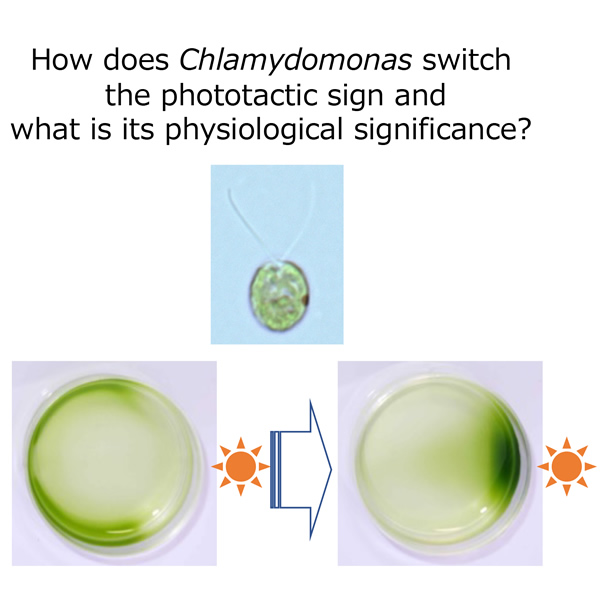Grant-in-Aid for Transformative Research Areas (A)
Publicly Offered Research:2022FY
Physiological significance of phototaxis in the green alga Chlamydomonas reinhardtii examined in a diorama environment
- Principal
investigator - Ken-ichi WakabayashiLaboratory for Chemistry and Life Science, Institute of Innovative Research, Tokyo Institute of Technology
The unicellular green alga Chlamydomonas is a model organism in the fields of cilia, photosynthesis, and photobehavior. Chlamydomonas cells perceive light by an eyespot and change swimming directions by modulating motility of two cilia (a.k.a. flagella) to exhibit either positive or negative phototaxis. We have previously shown that positive and negative phototaxis in Chlamydomonas is induced when the accumulation of reactive oxygen species (ROS) in the cell is high and low, respectively. However, "positive phototaxis with increased ROS" means that when ROS is high, the cells move toward a strong light environment where ROS is more likely to be produced, which seems to be suicidal. In this study, we aim to clarify 1) the molecular mechanism of determination of phototactic sings by ROS and 2) the physiological significance of sign switching in phototaxis, by using the mutants with defects in ROS-dependent sign switching in phototaxis. In (1), the causative genes of mutants and their functions will be elucidated, and in (2), the survival of the mutant strains will be examined by constructing a diorama light environment in the laboratory that mimics the light environment in the field.

 Ethological dynamics in diorama environments
Ethological dynamics in diorama environments